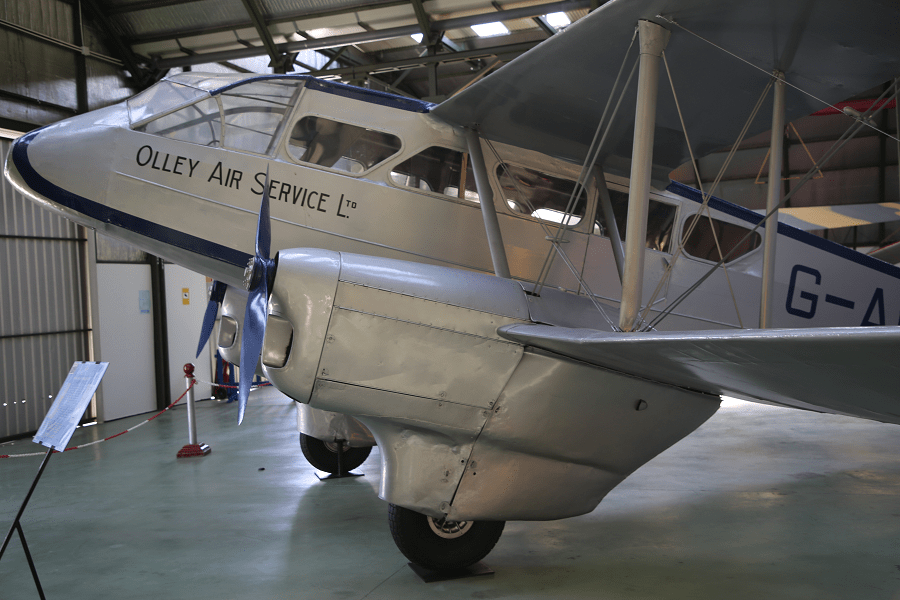de Havilland DH.89 Dragon Rapide
The de Havilland DH.89 Dragon Rapide is a 1930s short-haul biplane airliner developed and produced by British aircraft company de Havilland. Capable of accommodating 6–8 passengers, it proved an economical and durable craft, despite its outdated plywood construction.
Developed during the early 1930s, the Dragon Rapide was essentially a smaller, twin-engined version of the four-engined DH.86 Express, and shared a number of common features, such as its tapered wings, streamlined fairings and Gipsy Six engines. First named the “Dragon Six”, the type was marketed as “Dragon Rapide” and later simply known as the “Rapide”. Upon its introduction in summer 1934, it proved to be a popular aircraft with airlines and private civil operators alike, attaining considerable foreign sales in addition to its domestic use.
Upon the outbreak of the World War II, many of the civil Rapides were impressed into service with the Royal Air Force (RAF) and Royal Navy. Referred to in military service by the name de Havilland Dominie, the type was employed for radio and navigation training, passenger transport and communications missions. British training aircraft had names with educational associations, and dominie is a Scots term for a school teacher.
Hundreds of additional Dominies were also constructed during the war. Other Rapides continued to be operated by British airlines throughout the war under the auspices of the Associated Airways Joint Committee (AAJC). Postwar, many military aircraft were returned to civilian service. Shortly after the end of the Second World War, de Havilland introduced a Dragon Rapide replacement, the de Havilland Dove.
Country: United Kingdom
First flight: 17 April 1934
Years of production: 1934—1946
Production: 727 planes
Length: 34 ft 6 in (10.52 m)
Wingspan: 48 ft 0 in (14.63 m)
Height: 10 ft 3 in (3.12 m)
Crew: 1
Capacity: 8 passengers
Engine: 2 × de Havilland Gipsy Six
Power: 2 × 200 HP (150 kW)
Maximum speed: 157 mph (253 km/h, 136 kn)
Range: 556 mi (895 km, 483 nmi)
Ceiling: 16,700 ft (5,100 m)
Weight: 1,465 kg (3,230 lb)
Cuatro Vientos Museum (Madrid, Spain) and Bourget Museum (Paris, France)















